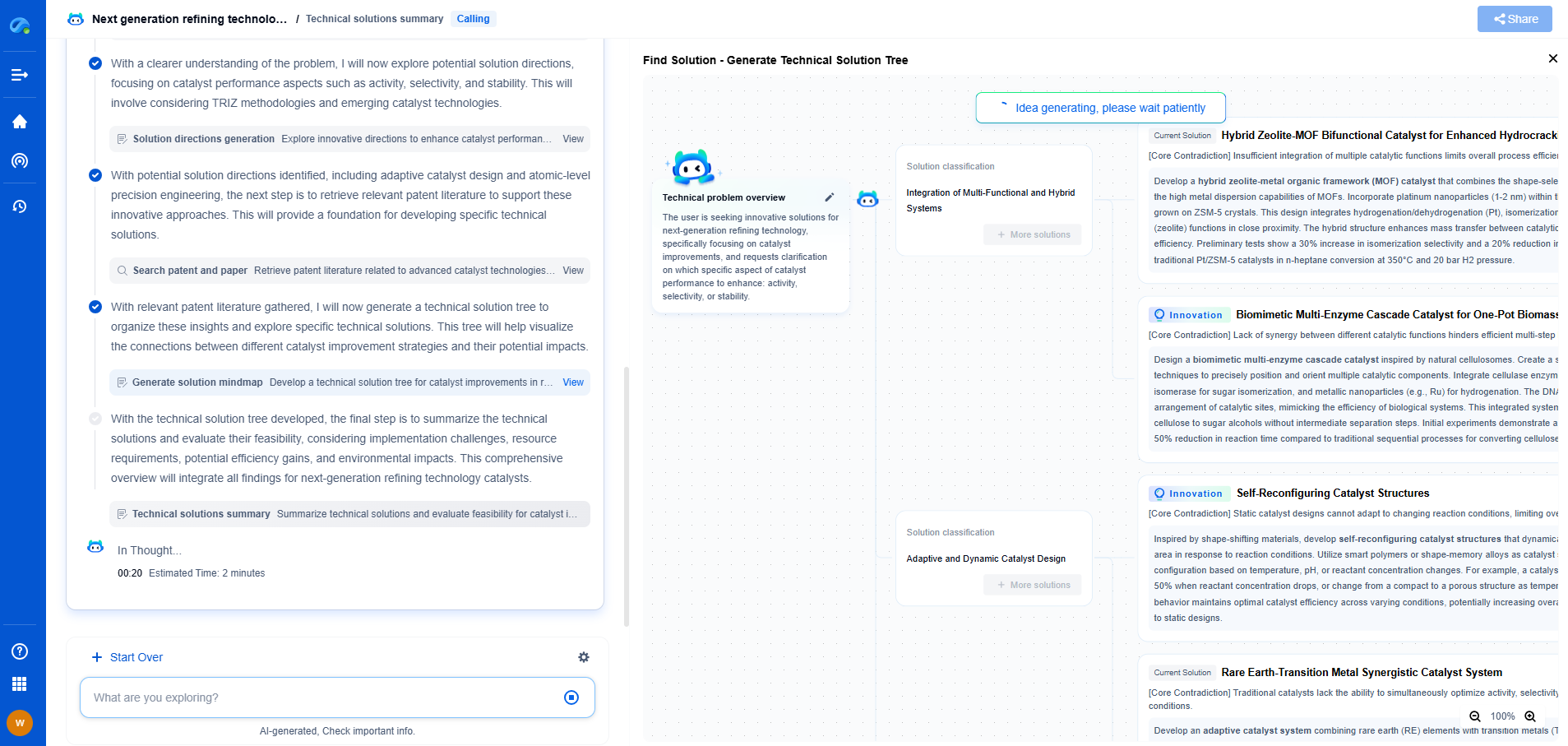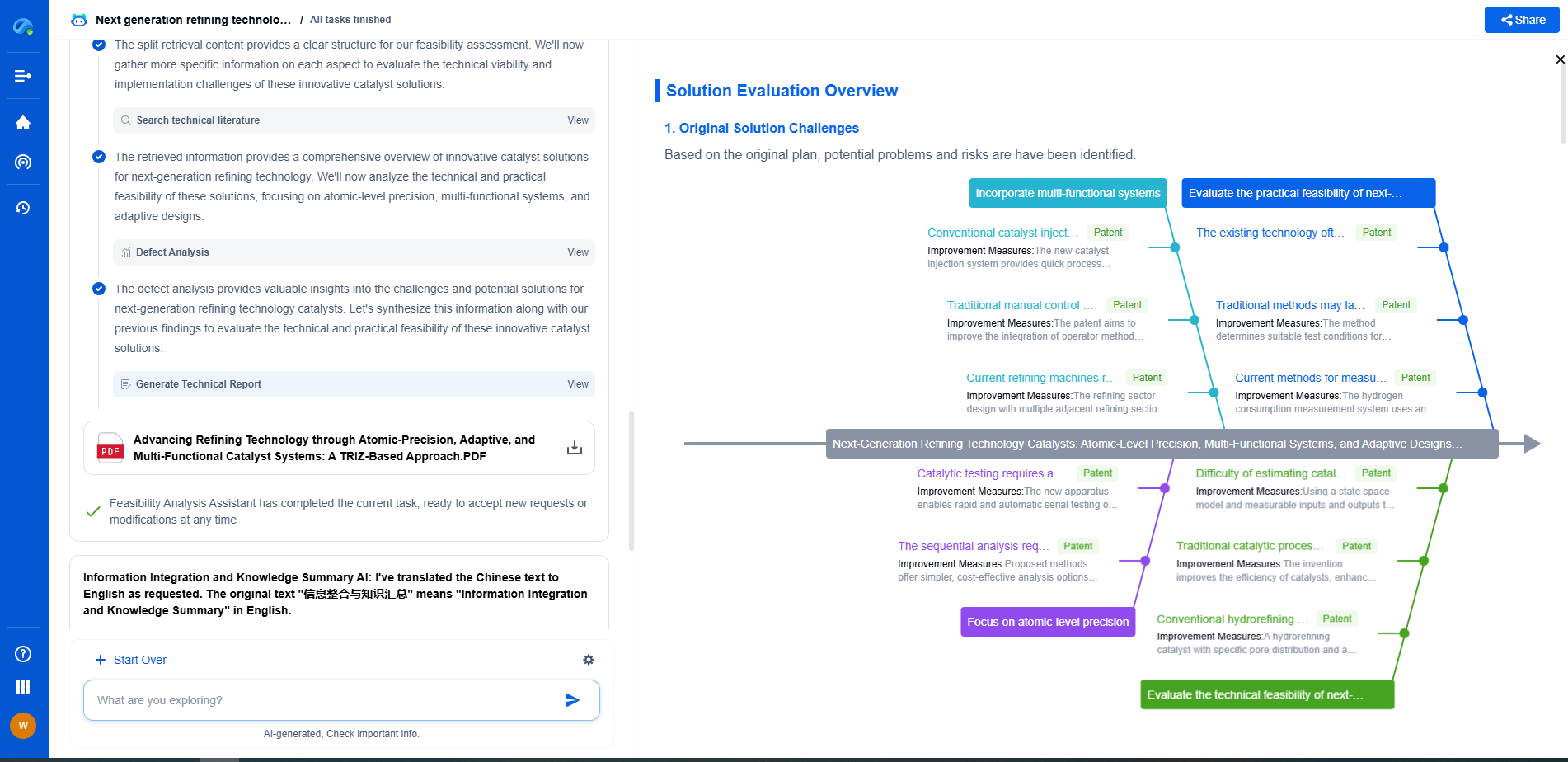BPA-Free Alternatives in Food Packaging Polymers
JUL 3, 2025 |
Bisphenol A (BPA) is a chemical compound primarily used in the production of polycarbonate plastics and epoxy resins. These materials are widespread, found in everything from water bottles to the linings of food cans. Concerns over BPA stem from its ability to leach into food and beverages, particularly when subjected to heat. Scientific studies have shown that BPA can mimic estrogen and potentially disrupt endocrine function, raising alarms about its possible effects on human health. As awareness of these issues has grown, so has the demand for BPA-free alternatives in food packaging.
The Rise of BPA-Free Packaging
In response to health concerns, manufacturers and consumers alike are turning towards BPA-free packaging options. The food packaging industry has accelerated research and development to create safer, healthier alternatives. BPA-free labeling has become a selling point, signaling to consumers that a product is free from this controversial compound. But what are these alternatives, and how do they compare to traditional BPA-containing materials?
Alternative Materials in Food Packaging
1. Polypropylene (PP)
Polypropylene is a popular BPA-free alternative used in food packaging. Known for its versatility, PP is durable, lightweight, and resistant to heat and chemicals, making it suitable for a variety of food storage applications. Unlike polycarbonate, it does not contain BPA, ensuring a safer option for both manufacturers and consumers. Its adaptability has made it an ideal candidate for everything from yogurt containers to microwave-safe dishes.
2. Polyethylene Terephthalate (PET)
Another BPA-free option is polyethylene terephthalate, commonly known as PET. This material is widely used in the beverage industry for bottling water, juices, and sodas. PET is valued for its strength and ability to create clear, see-through containers. Importantly, PET does not use BPA in its production, allaying consumer fears over chemical exposure. It is also highly recyclable, adding an environmental benefit to its list of advantages.
3. Polylactic Acid (PLA)
Polylactic acid is gaining traction as a biodegradable alternative to traditional plastics. Derived from renewable resources such as corn starch or sugarcane, PLA offers a sustainable option for food packaging. While it is not suitable for high-temperature applications, it is an excellent choice for cold food storage and packaging applications. Its compostable nature appeals to environmentally conscious consumers looking to reduce their ecological footprint.
4. Glass and Stainless Steel
While not polymers, glass and stainless steel are notable BPA-free alternatives for food packaging. Glass is impermeable and does not leach any substances into food, making it a preferred choice for products like baby food or pickles. Stainless steel, on the other hand, is durable and ideal for reusable containers, such as lunch boxes and water bottles. Both materials offer longevity and are easily recyclable, further enhancing their appeal in sustainable packaging solutions.
Challenges and Future Directions
Despite the availability of BPA-free alternatives, challenges remain in their widespread adoption. Cost is a significant factor, as some substitutes can be more expensive to produce than traditional BPA-laden plastics. Moreover, the performance characteristics of alternatives like PLA may not yet meet all industrial requirements for heat resistance or durability.
Nevertheless, the future looks promising. Innovation in material science continues to drive the development of new, safer, and more efficient BPA-free materials. As consumer demand for transparency and safety in food packaging grows, so will the industry’s capacity to provide sustainable solutions.
Conclusion
The shift towards BPA-free alternatives in food packaging is not just a trend; it represents a necessary evolution in consumer safety and environmental responsibility. With various materials like polypropylene, PET, PLA, glass, and stainless steel leading the charge, the landscape of food packaging is changing for the better. As we move forward, continued research and consumer advocacy will play critical roles in ensuring that these alternatives are accessible, affordable, and effective, paving the way for a healthier future.
Transform Polymeric Innovation with Patsnap Eureka
From biodegradable polymers to high-performance composites, the world of polymeric compounds is evolving faster than ever—driven by the demands of sustainability, functional customization, and global IP competition. Whether you're exploring novel copolymer architectures, optimizing polymerization techniques, or tracking material patents in bioplastics, time-to-insight is everything.
Patsnap Eureka, our intelligent AI assistant built for R&D professionals in high-tech sectors, empowers you with real-time expert-level analysis, technology roadmap exploration, and strategic mapping of core patents—all within a seamless, user-friendly interface.
Whether you're working on next-gen packaging films, bio-based resins, smart polymers for electronics, or new thermal-resistant composites, Eureka accelerates your journey from idea to patent to product—with unmatched clarity and speed.
🔍 Experience how Eureka can power your polymer R&D with AI intelligence—start your free trial today and unlock the future of materials innovation.
- R&D
- Intellectual Property
- Life Sciences
- Materials
- Tech Scout
- Unparalleled Data Quality
- Higher Quality Content
- 60% Fewer Hallucinations
Browse by: Latest US Patents, China's latest patents, Technical Efficacy Thesaurus, Application Domain, Technology Topic, Popular Technical Reports.
© 2025 PatSnap. All rights reserved.Legal|Privacy policy|Modern Slavery Act Transparency Statement|Sitemap|About US| Contact US: help@patsnap.com

